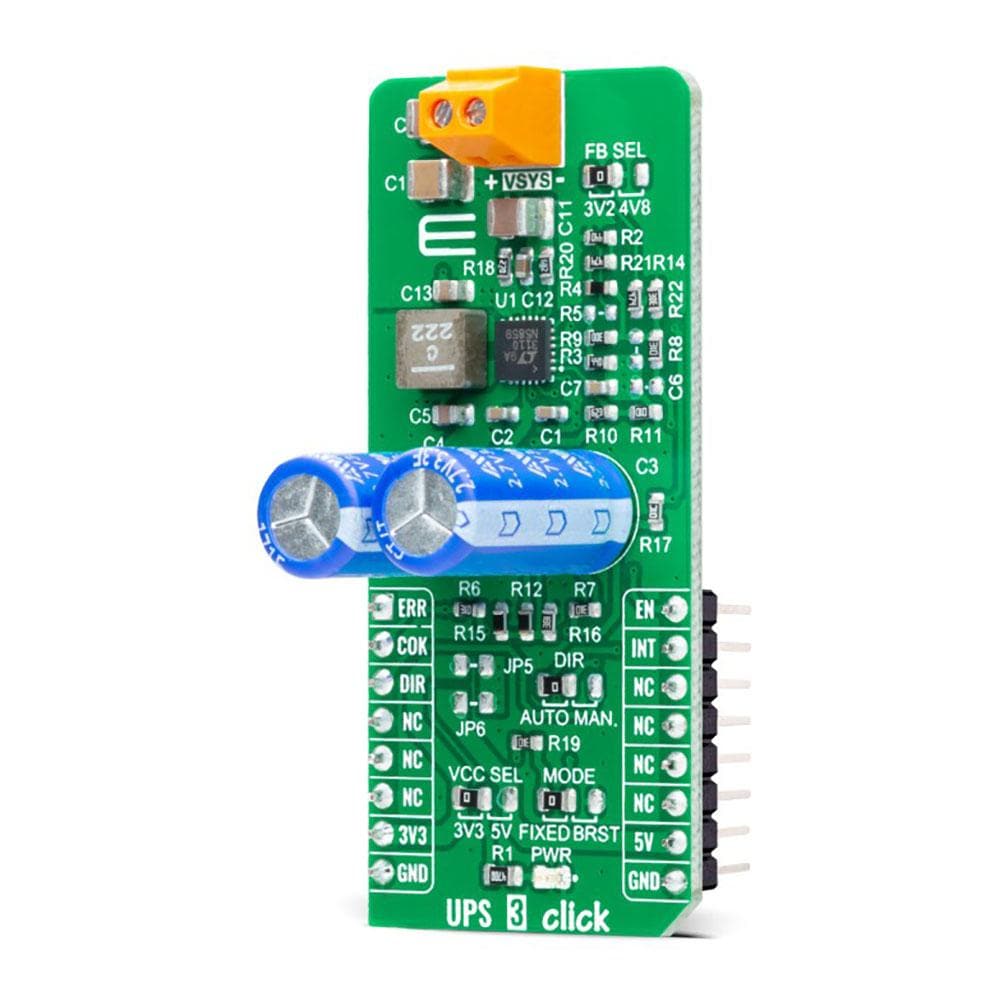
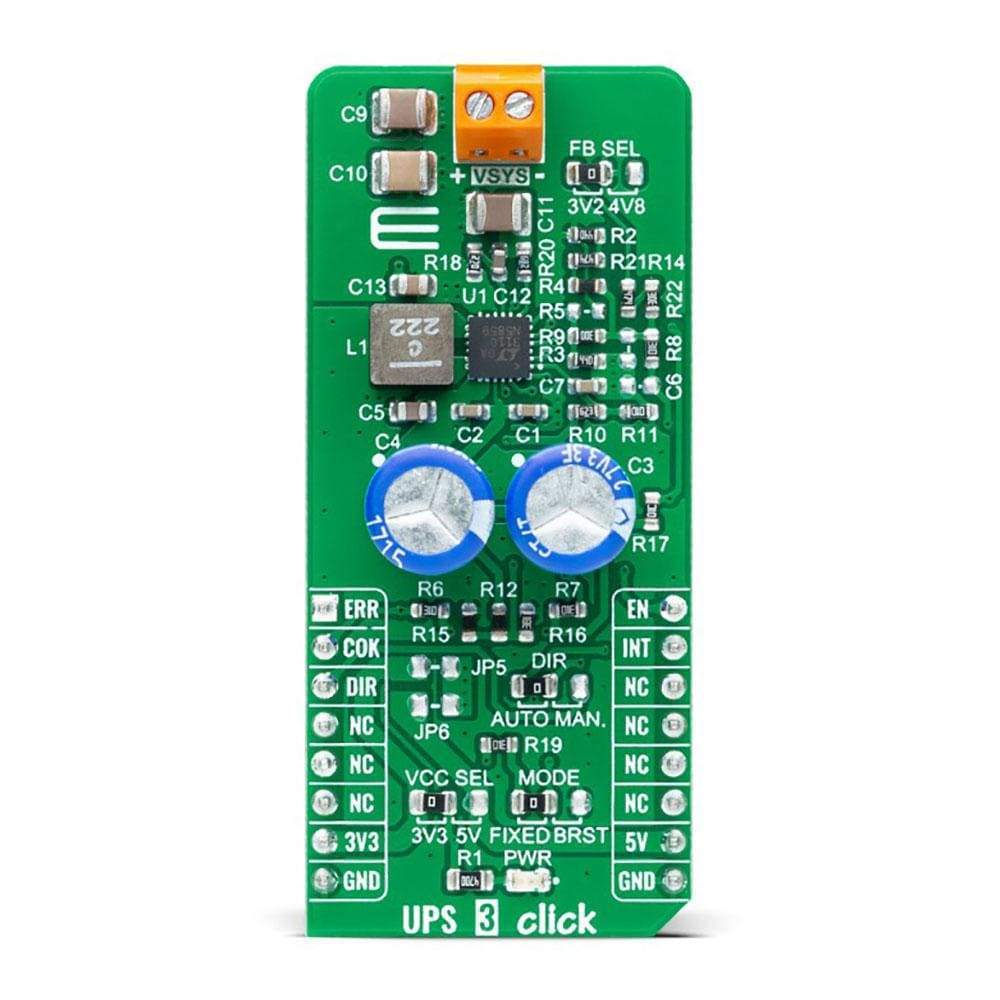
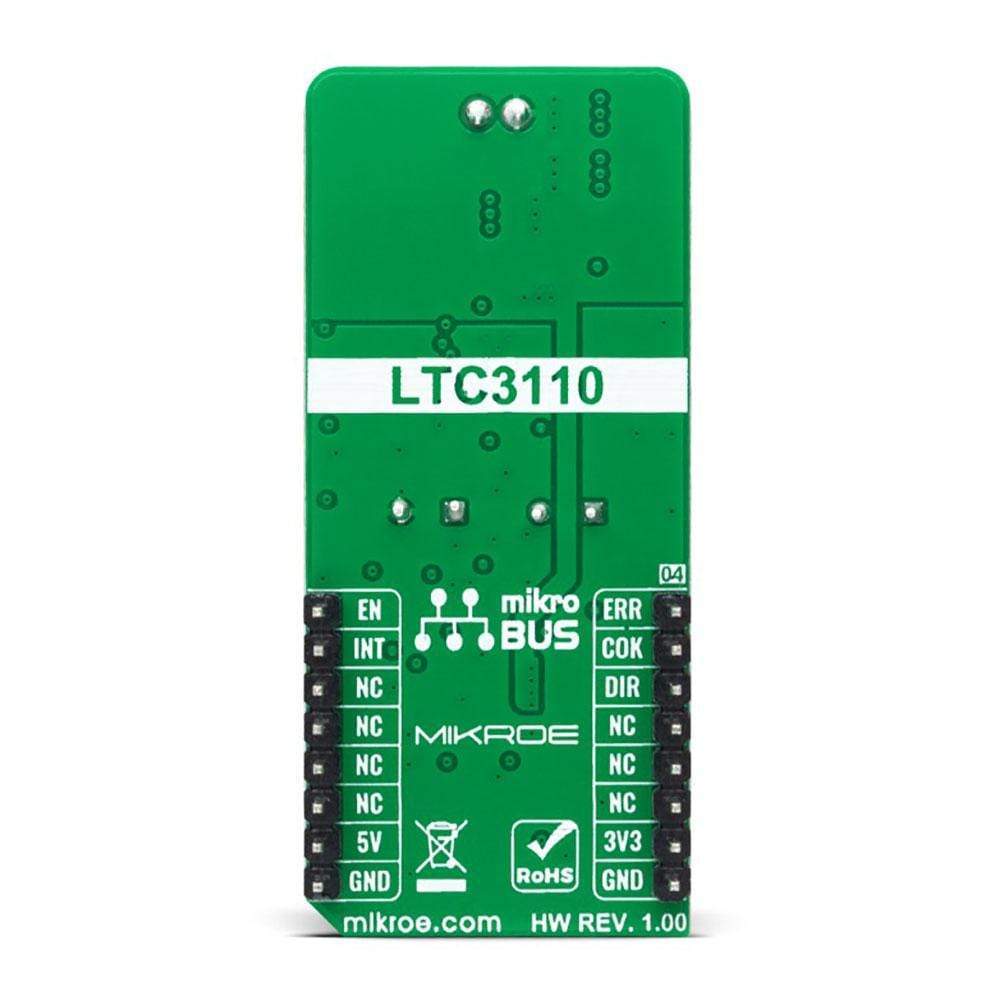
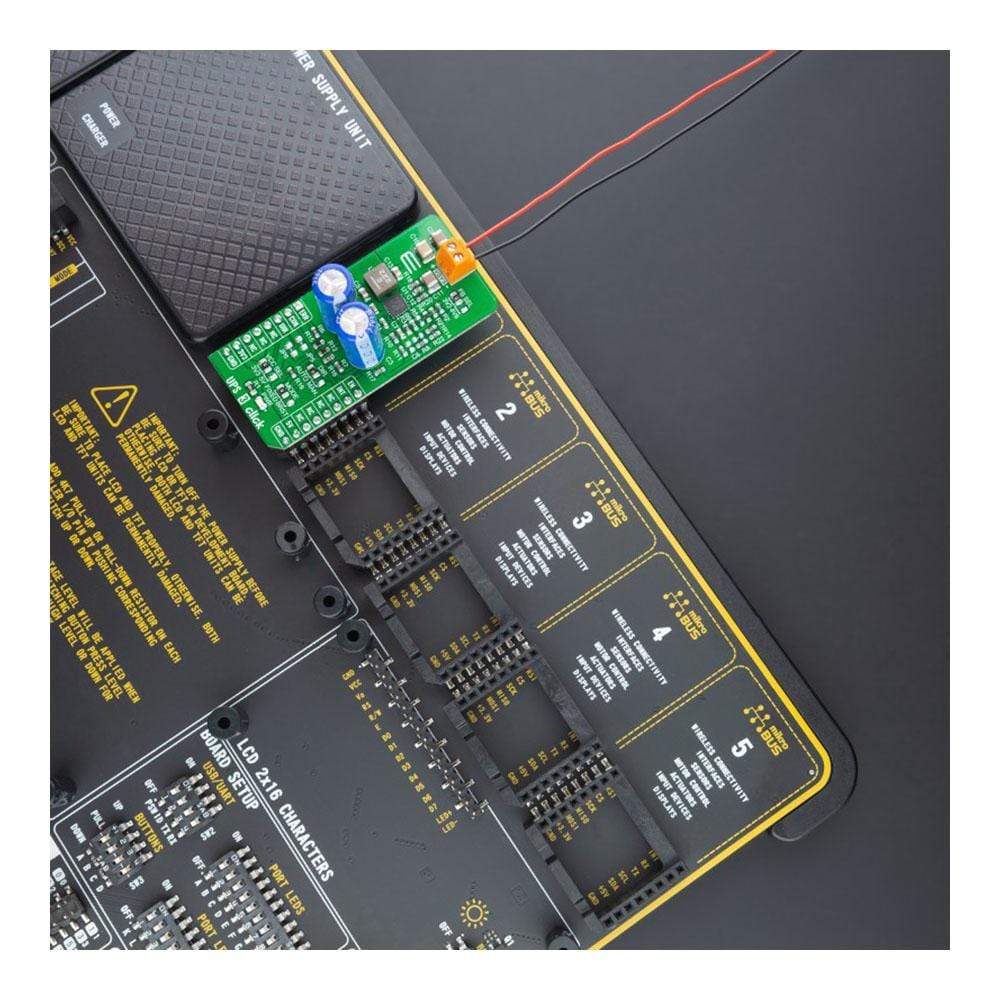
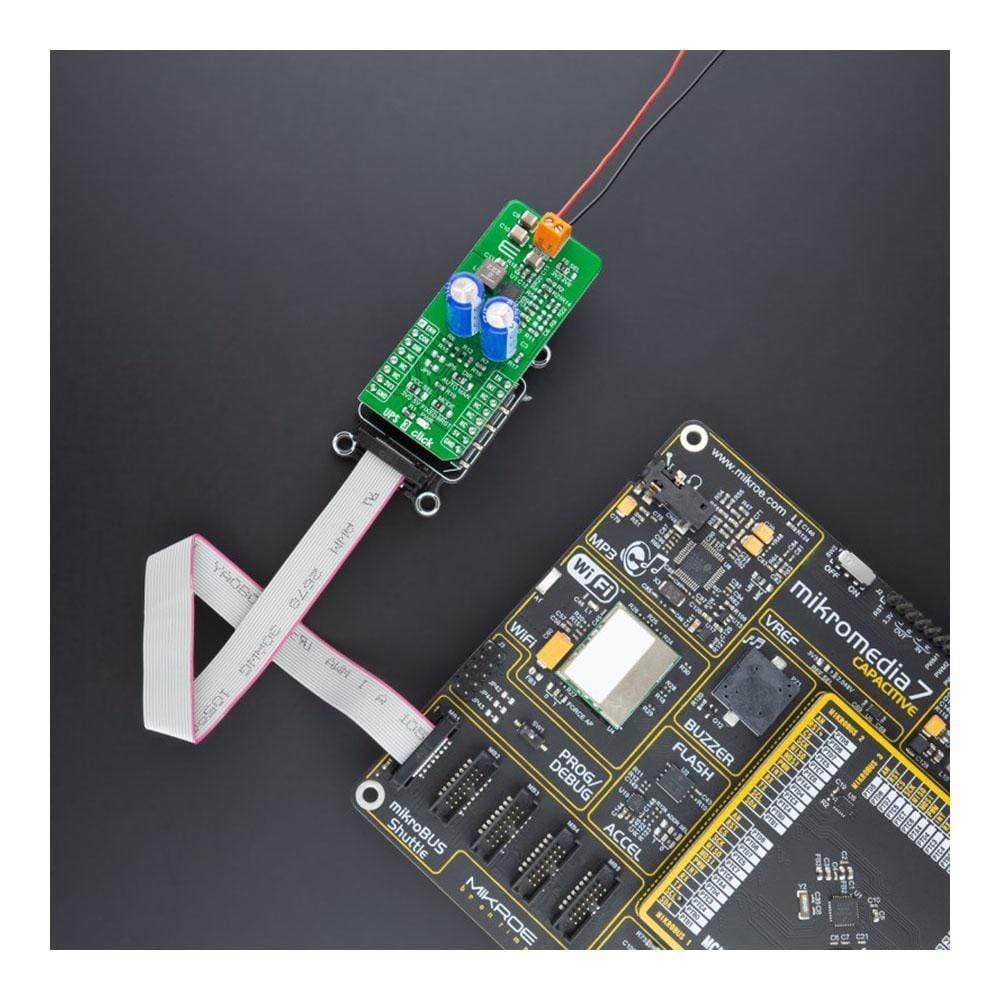
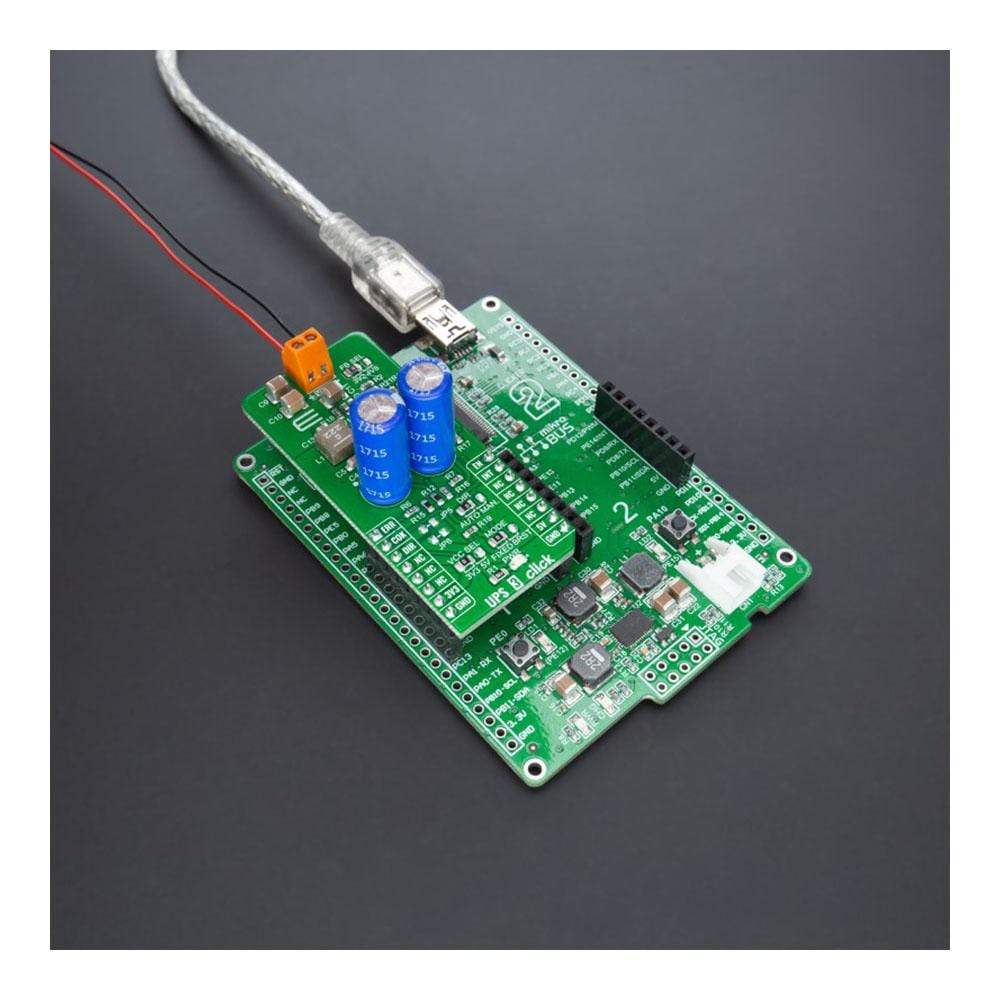
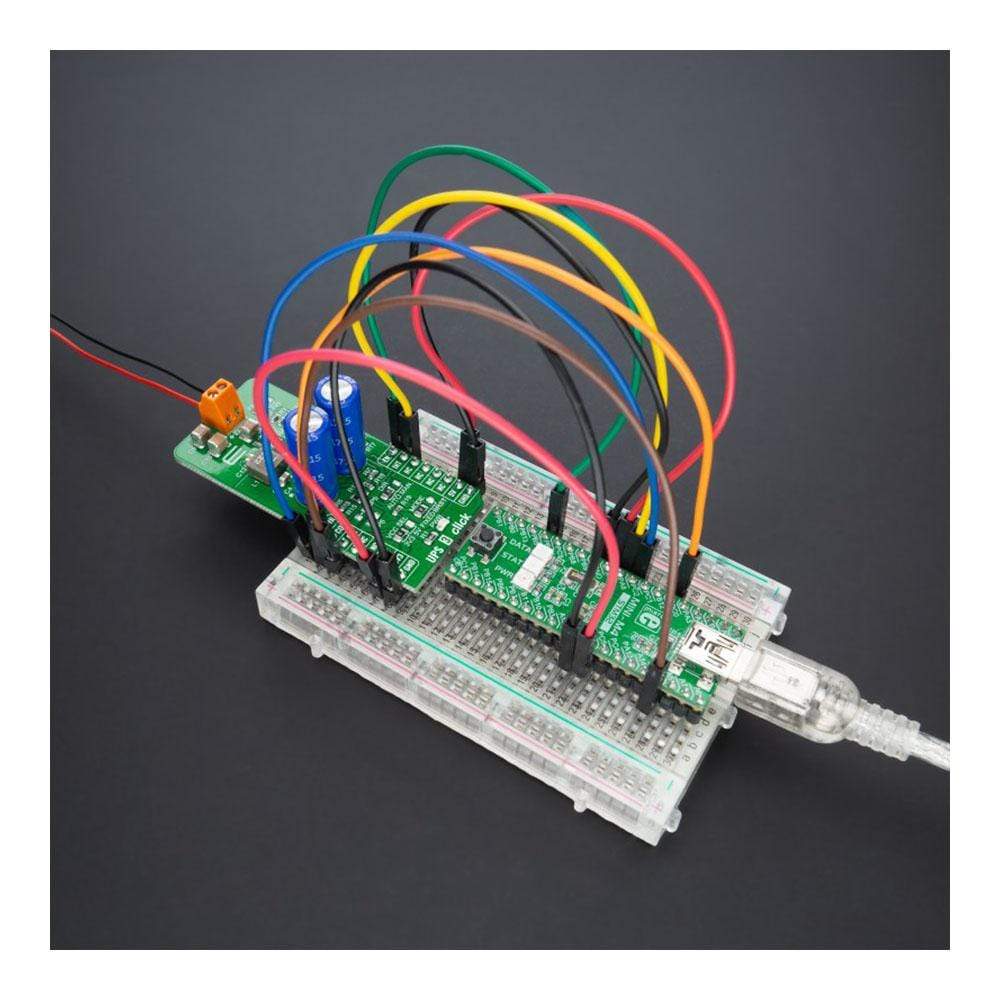
Overview
The UPS 3 Click Board™ is a compact add-on board that represents a bidirectional active charge/balancing solution. This board features the LTC3110, a bidirectional buck-boost DC/DC regulator/charger combination with selectable operation modes for charging and system backup from Analog Devices. It can autonomously transition from Charge to Backup mode or switch modes based on an external command. A proprietary low noise switching algorithm optimizes efficiency with capacitor/battery voltages above, below, or equal to the system output voltage. Additional features include voltage supervisors for direction control and end of a charge and a general-purpose comparator with open-collector output for interfacing with MCU. This Click Board™ is suitable for a backup power source for a wide range of battery-operated embedded applications.
The UPS 3 Click Board™ is supported by a mikroSDK compliant library, which includes functions that simplify software development. This Click Board™ comes as a fully tested product, ready to be used on a system equipped with the mikroBUS™ socket.
Downloads
Le UPS 3 Click Board™ est une carte complémentaire compacte qui représente une solution de charge/équilibrage active bidirectionnelle. Cette carte comprend le LTC3110, une combinaison régulateur/chargeur CC/CC buck-boost bidirectionnel avec modes de fonctionnement sélectionnables pour la charge et la sauvegarde du système à partir d'Analog Devices. Il peut passer de manière autonome du mode de charge au mode de sauvegarde ou changer de mode en fonction d'une commande externe. Un algorithme de commutation à faible bruit exclusif optimise l'efficacité avec des tensions de condensateur/batterie supérieures, inférieures ou égales à la tension de sortie du système. Les fonctionnalités supplémentaires incluent des superviseurs de tension pour le contrôle de direction et la fin d'une charge et un comparateur à usage général avec sortie à collecteur ouvert pour l'interfaçage avec le MCU. Cette Click Board™ convient comme source d'alimentation de secours pour une large gamme d'applications embarquées alimentées par batterie.
Le système UPS 3 Click Board™ est pris en charge par une bibliothèque compatible mikroSDK, qui comprend des fonctions qui simplifient le développement logiciel. Cette Click Board™ est un produit entièrement testé, prêt à être utilisé sur un système équipé du socket mikroBUS™.
| General Information | |
|---|---|
Part Number (SKU) |
MIKROE-4479
|
Manufacturer |
|
| Physical and Mechanical | |
Weight |
0.023 kg
|
| Other | |
Country of Origin |
|
HS Code Customs Tariff code
|
|
EAN |
8606027381973
|
Warranty |
|
Frequently Asked Questions
Have a Question?
Be the first to ask a question about this.







